#Art #History #Murano #Glass #Chandeliers
Few objects in the world of decorative arts capture the imagination quite like a Murano glass chandelier. These luminous masterpieces are more than lighting fixtures—they are the embodiment of Italian artistry, innovation, and centuries-old tradition. Handcrafted on the island of Murano near Venice, these chandeliers have graced palaces, villas, and contemporary homes for generations. In this blog, we explore the history, shapes, and techniques that make Murano glass chandeliers true icons of European design.
The Origins of Murano Glass
Murano glassmaking dates back to the 13th century, when Venetian authorities moved all glass furnaces to Murano to prevent fires in the crowded city and to protect the secrets of the trade. Over time, Murano evolved into a world-renowned hub for glass innovation. Its artisans—known as maestri vetrai—pioneered techniques like cristallo (clear glass), aventurina (sparkling glass with metallic flecks), and filigrana (glass threads).
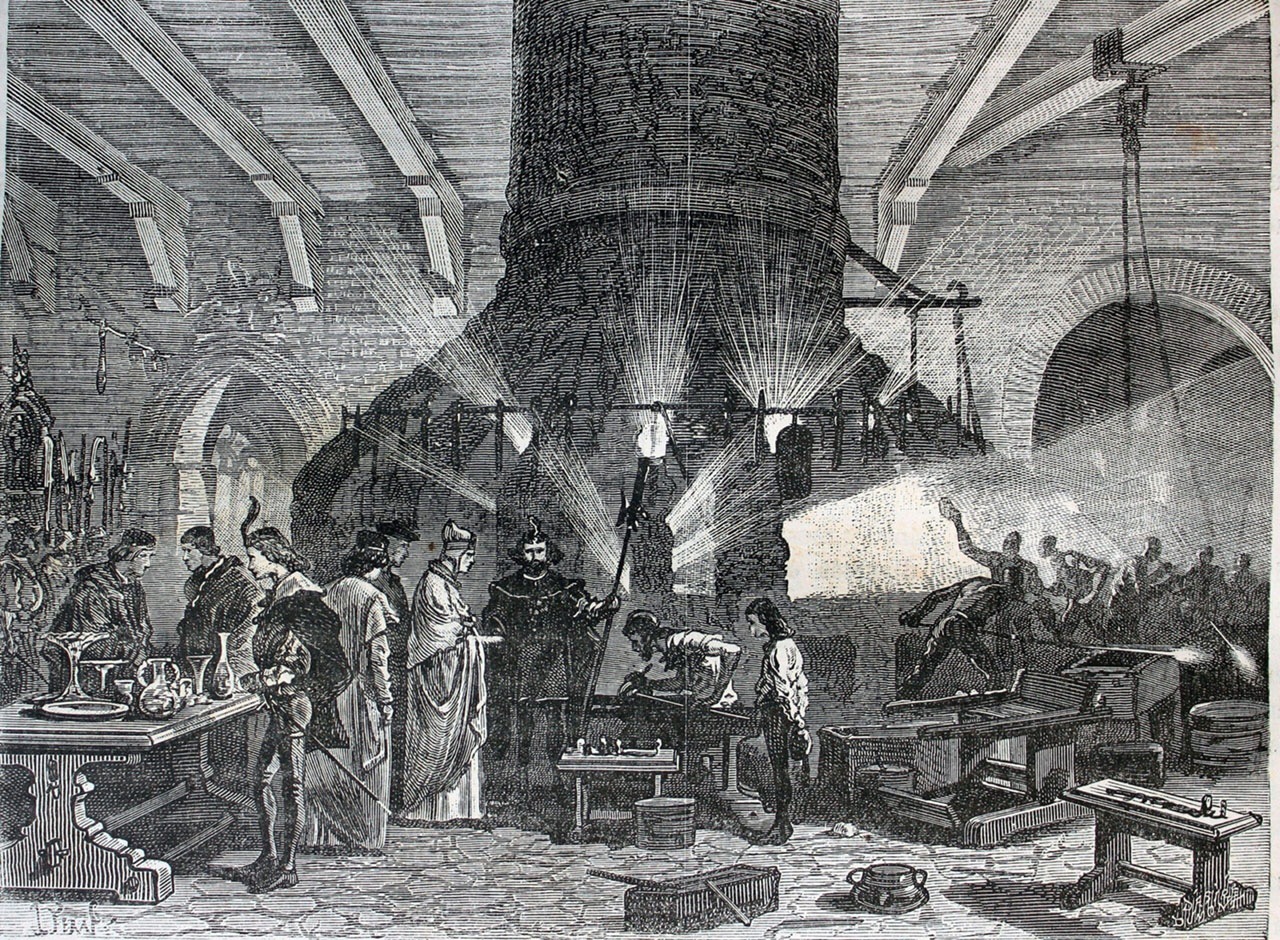
By the 17th century, Murano glassmakers were producing complex lighting structures, laying the groundwork for the grand chandeliers that would flourish in the centuries to come.
The Rise of the Murano Chandelier
The Murano chandelier as we know it today emerged in the 18th century, during the Rococo and early Neoclassical periods. It was an era of extravagance and elegance—an ideal environment for ornate, decorative lighting.
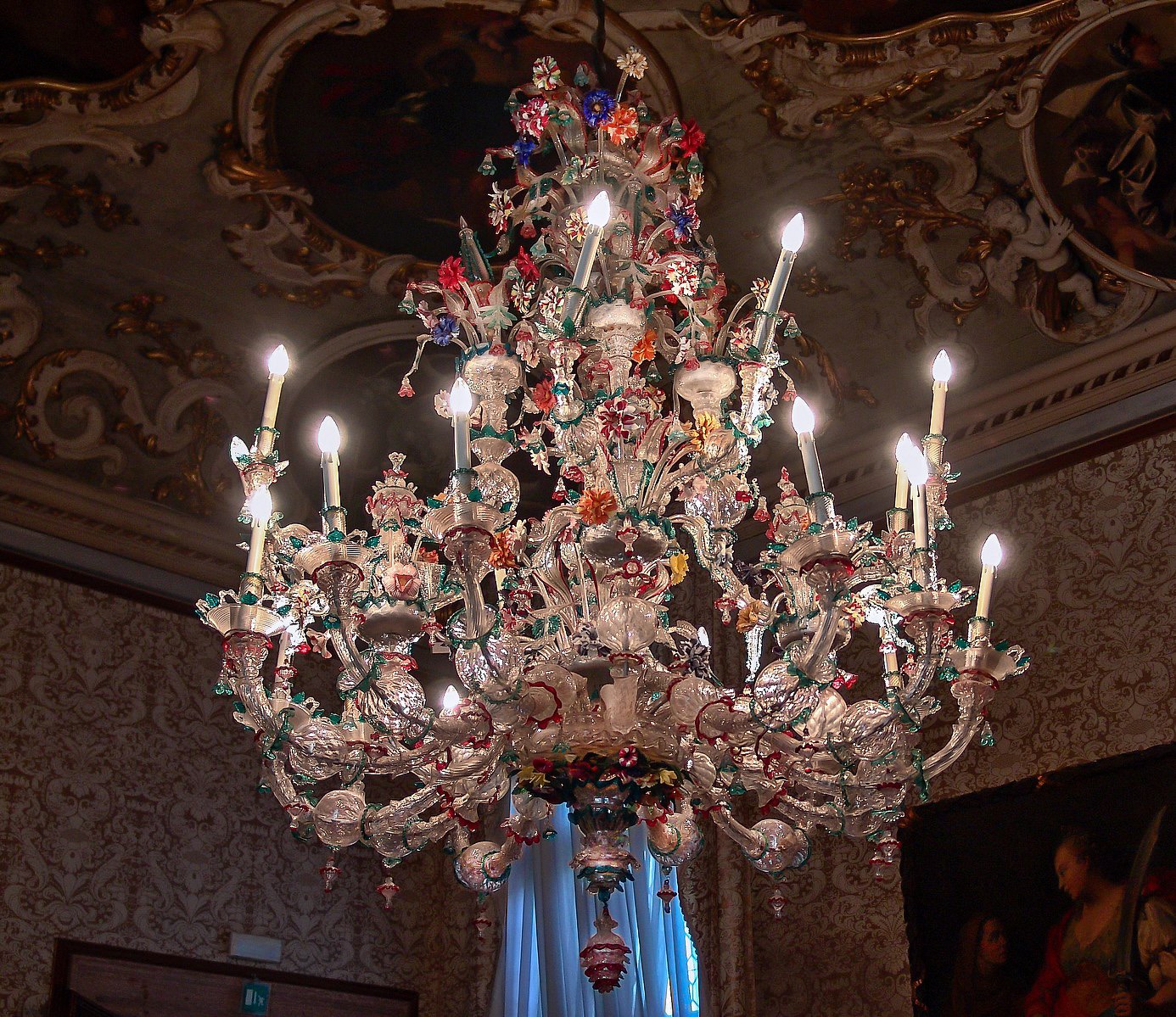

One of the most iconic forms that developed during this time is the Rezzonico chandelier, named after a noble Venetian family. These chandeliers featured an elaborate central structure with multiple arms, all richly adorned with glass flowers, leaves, and decorative elements. Their theatrical, botanical elegance helped define Venetian luxury and soon became a status symbol across Europe.
A Distinctive Aesthetic
So what sets Murano chandeliers apart from other decorative lighting? The answer lies in the material, form, and handcrafting process:
1. Color and Clarity
Murano glass is famous for its brilliant transparency and rich coloration. Artisans add minerals and oxides to create deep reds, cobalt blues, amber golds, and delicate pastels. These vibrant colors—combined with the way glass refracts light—create a luminous glow that fills a room without feeling heavy.
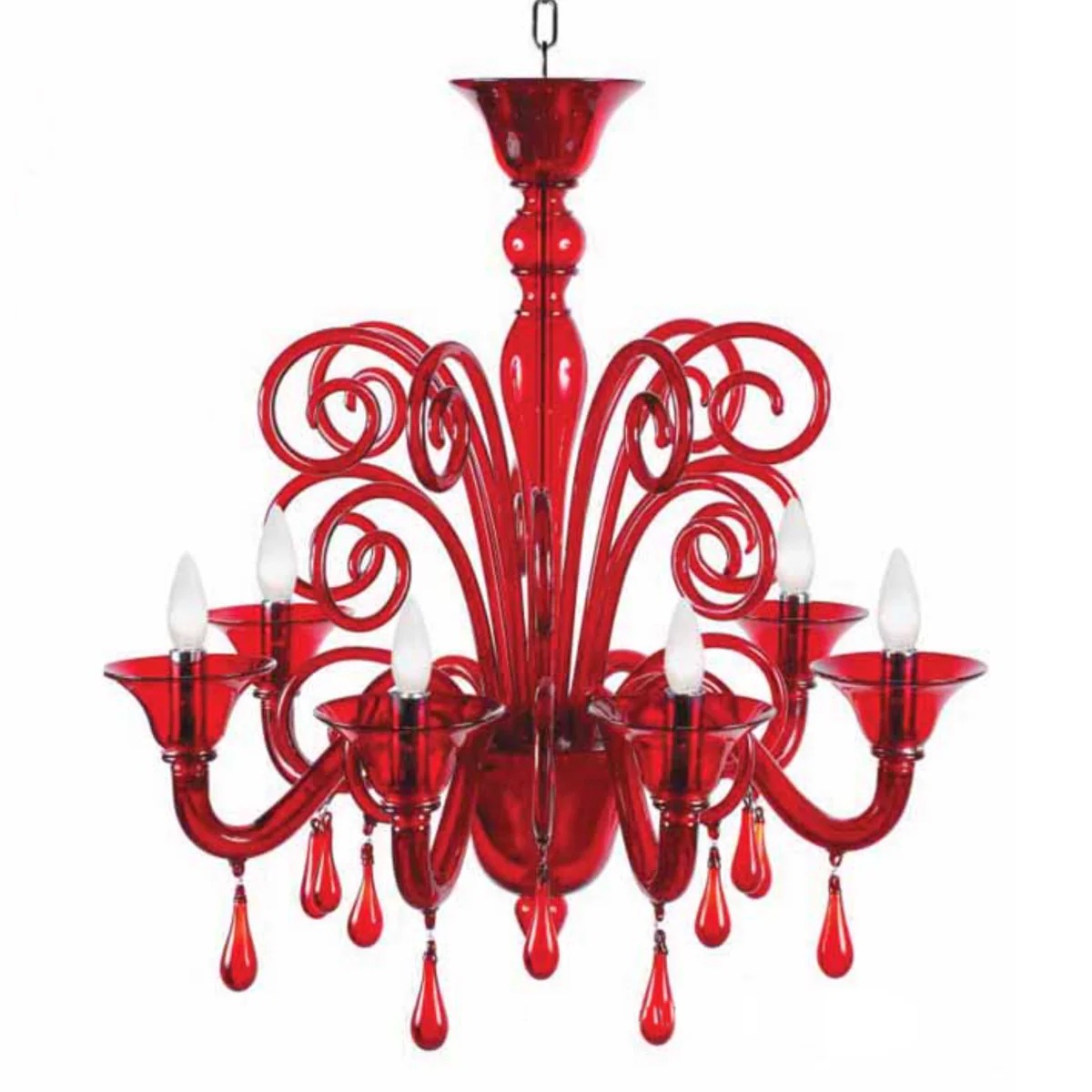

2. Sculptural Quality
Each chandelier is made piece by piece: every arm, leaf, and flower is hand-blown or hand-molded, then assembled into a harmonious composition. Some chandeliers feature botanical elements, while others lean toward geometric minimalism, depending on the period and artistic vision.
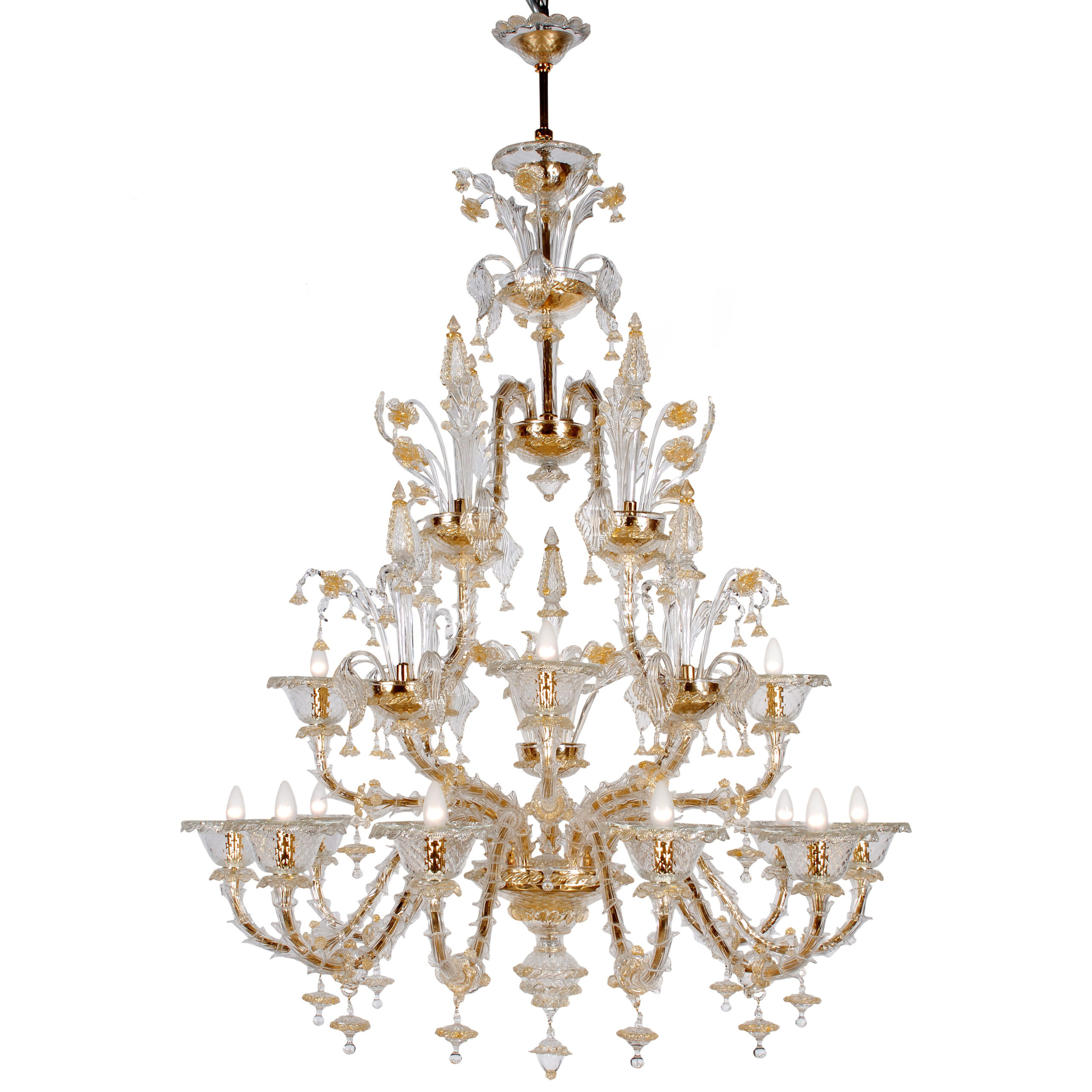

3. Impressive Scale
Whether traditional or modern, Murano chandeliers often feature generous dimensions. It’s not uncommon for a large chandelier to be over 6 feet (180 cm) high, making it the visual and emotional centerpiece of a space.


Techniques of the Murano Glassmaker
Creating a Murano glass chandelier is both a time-honored tradition and a technical feat. The process requires not only extraordinary skill but also deep knowledge of material behavior, temperature control, and artistic composition. Each chandelier is assembled from dozens—sometimes hundreds—of individual components, all made by hand.
Key Techniques Used in Murano Glass Chandeliers:
Glassblowing (soffiatura)
This foundational technique involves gathering molten glass from the furnace and inflating it through a blowpipe. The artisan then shapes the glass using tools, motion, and breath. For chandeliers, this technique is used to form the arms, cups, and central column. Precision and timing are critical—Murano artisans must work swiftly before the glass cools and becomes unworkable.
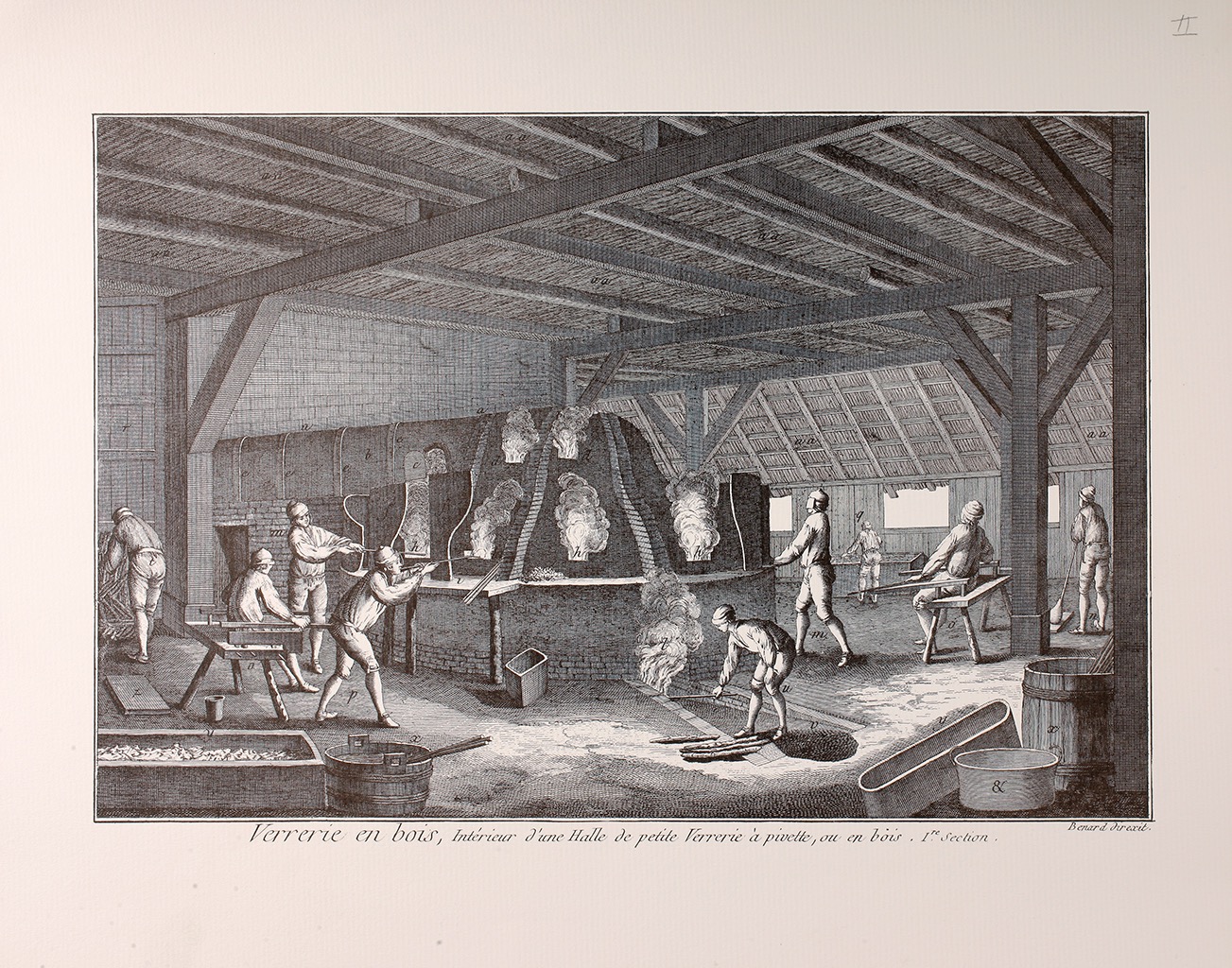

Lampworking (lavorazione a lume)
Used for more intricate decorative elements like flowers, vines, or figurines, lampworking involves melting glass rods over a flame and shaping them with tweezers, paddles, or molds. These details add depth, texture, and individuality to each chandelier, and are especially prominent in Rezzonico-style pieces.
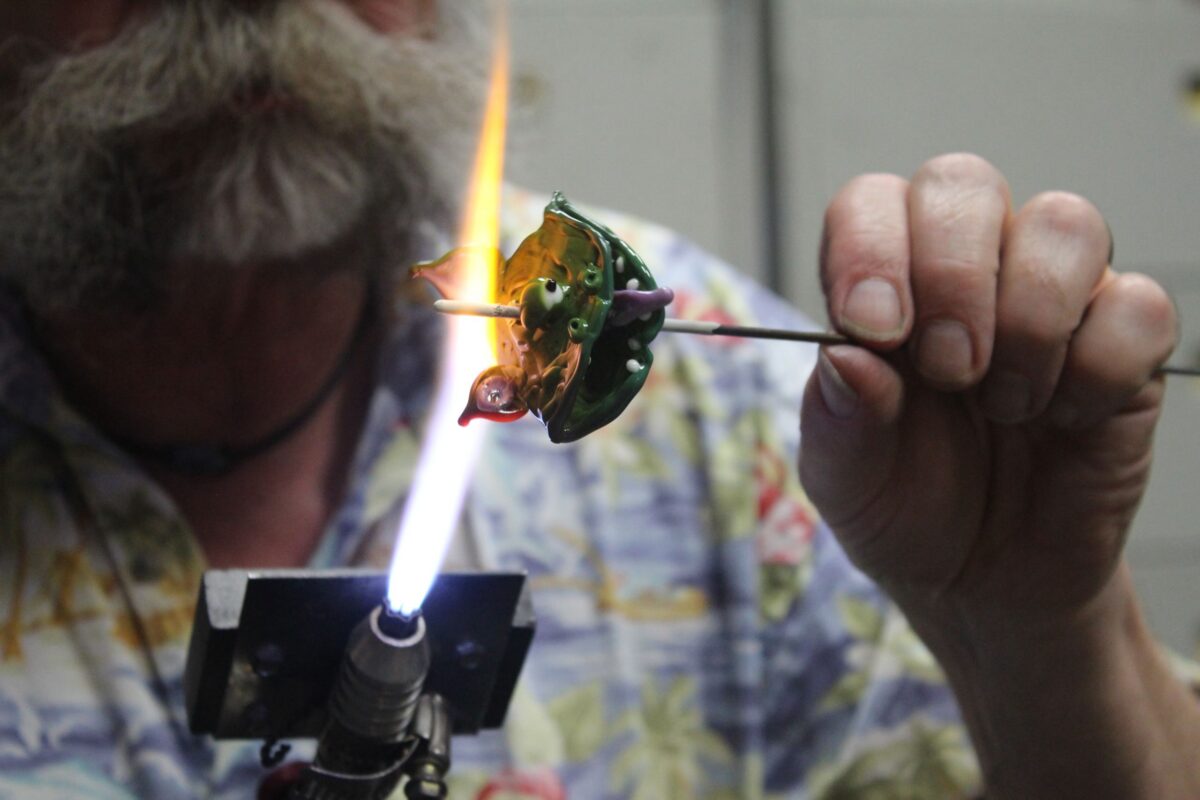

Filigrana (Filigree Work)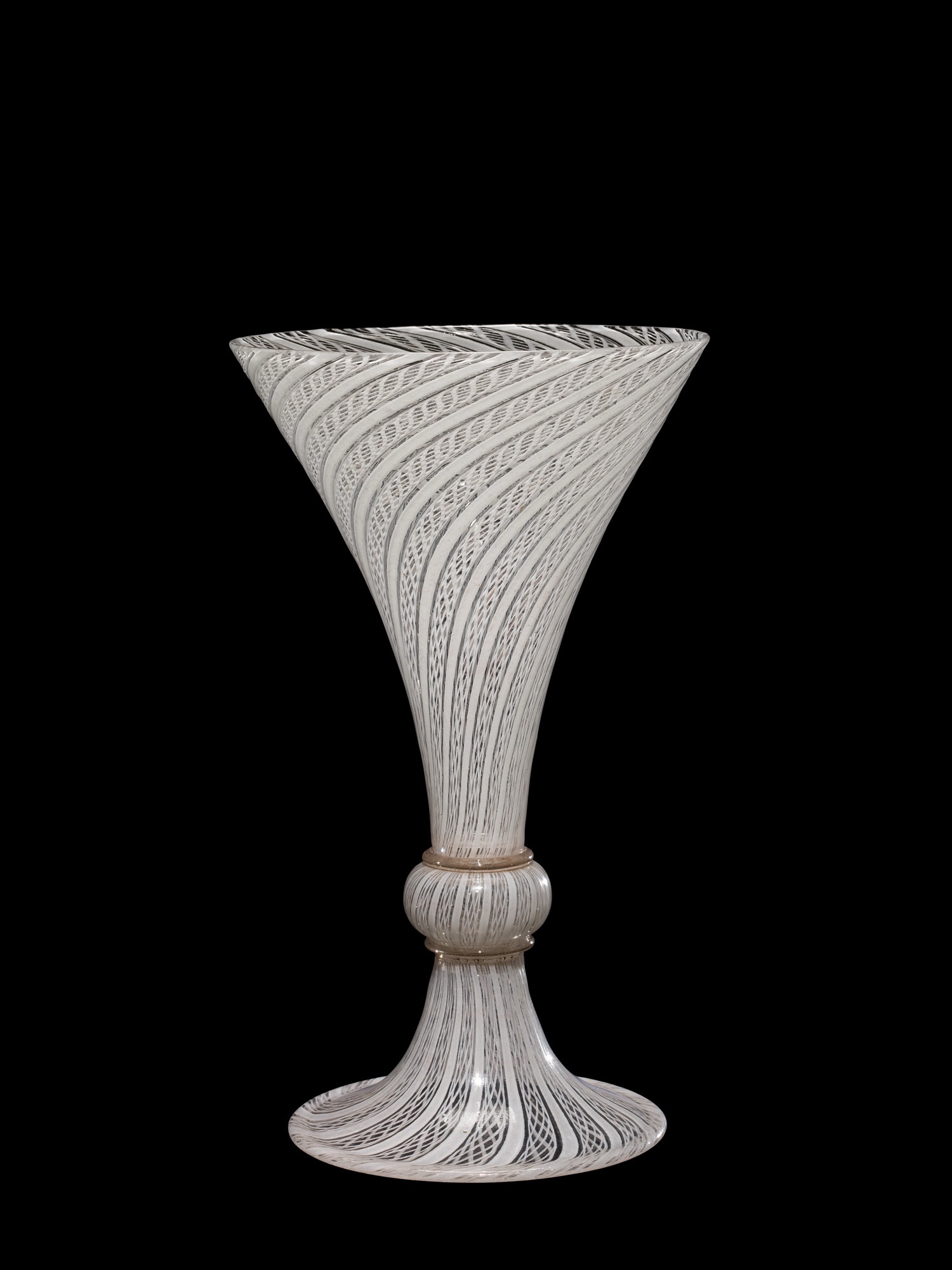

A hallmark of Murano technique since the Renaissance, filigrana involves arranging thin canes of glass—often with a spiral or net-like pattern—into complex designs. These are fused and blown into forms with delicate, lace-like transparency. Filigrana is a signature feature in more refined or monochromatic chandeliers, giving them an ethereal glow when illuminated.
Cristallo
Invented in the 15th century, cristallo is a particularly clear and colorless glass that allows light to pass through with exceptional brilliance. It is still used today in modern chandeliers, where clarity and purity of form are emphasized.
Coloring Techniques
Colors in Murano glass are achieved by adding minerals to the molten mixture. For example:
-
Cobalt oxide produces deep blues.
-
Gold leaf or chloride creates rich reds and ambers.
-
Manganese gives violet tones.
These colors are often layered or mixed to achieve unique hues and gradients, giving each chandelier a distinct personality.
Avventurina
This dazzling technique involves the addition of metal flakes—usually copper or bronze—into the glass mixture to produce a shimmering, star-like sparkle. The name comes from avventura, meaning “by chance,” since the effect was discovered accidentally in the 17th century. Avventurina is used in accent details or entire elements for dramatic impact.
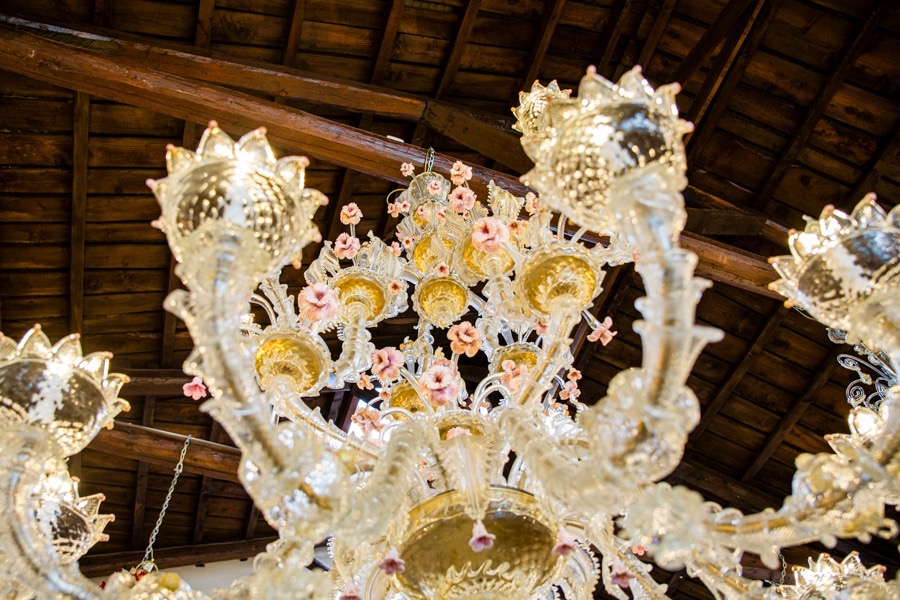

Cold Working
After the chandelier parts have cooled, further refinement may be applied. Artisans use cutting, engraving, or polishing techniques to shape or embellish pieces. Sometimes the ends of arms are ground smooth or incised with fine patterns that catch the light at different angles.
Classic and Contemporary Forms
While rooted in tradition, Murano chandeliers continue to evolve. Let’s take a look at some of the most popular styles:
Rezzonico Chandeliers
Characterized by scroll-like arms and ornate floral decorations, these chandeliers are opulent and theatrical—perfect for historic interiors or a maximalist moment in a modern home.
Modern Murano Chandeliers
Today’s designers are reinterpreting classic forms through a contemporary lens. Sleek, minimal silhouettes meet bold colors or monochromatic palettes. The result is a fusion of old-world craftsmanship and modern aesthetics, as seen in pieces like the Stars of Istanbul chandelier on Styylish —a large-scale fixture featuring 18 rising cups and pastoral motifs in transparent glass.
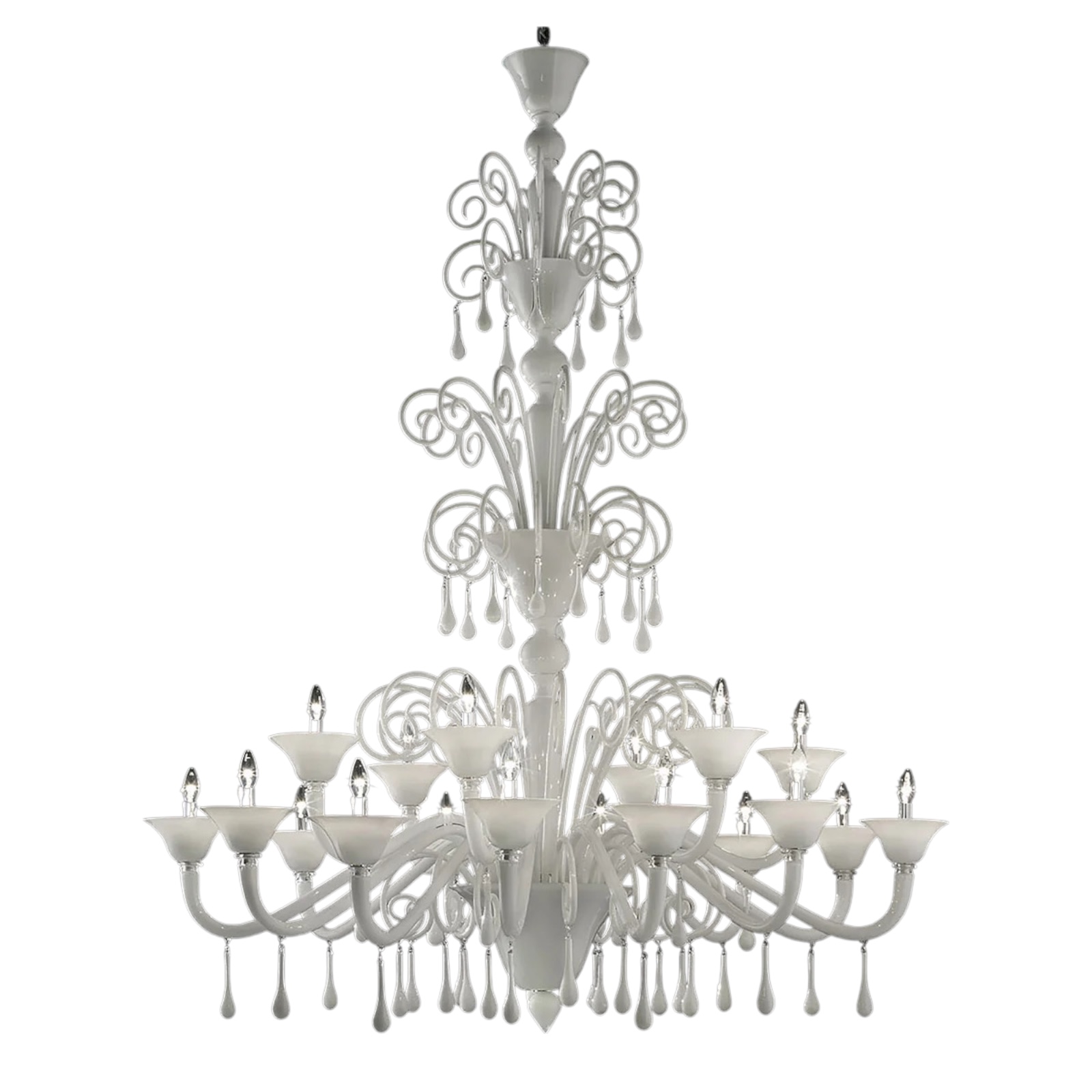

Tiered Chandeliers
These feature concentric levels of glass arms or drops, often used in high-ceilinged spaces such as stairwells or hotel lobbies.
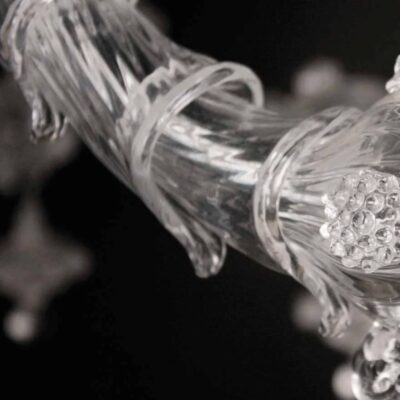
 Organic Forms
Organic Forms
Inspired by nature, these chandeliers include vines, blossoms, or water-like ripples in the structure—an homage to Murano’s lagoon surroundings.
Choosing a Murano Chandelier for Your Home
When selecting a Murano chandelier, consider:
-
Ceiling Height: Larger pieces require ample vertical space. Many chandeliers come in custom heights.
-
Room Function: A dining room calls for warmth and elegance; an entryway can handle bold drama.
-
Color Scheme: Clear glass adds versatility, while colored glass can highlight architectural or design features.
Additionally, modern artisans now offer modular or customizable options, so you can adapt a traditional concept to suit your space perfectly.
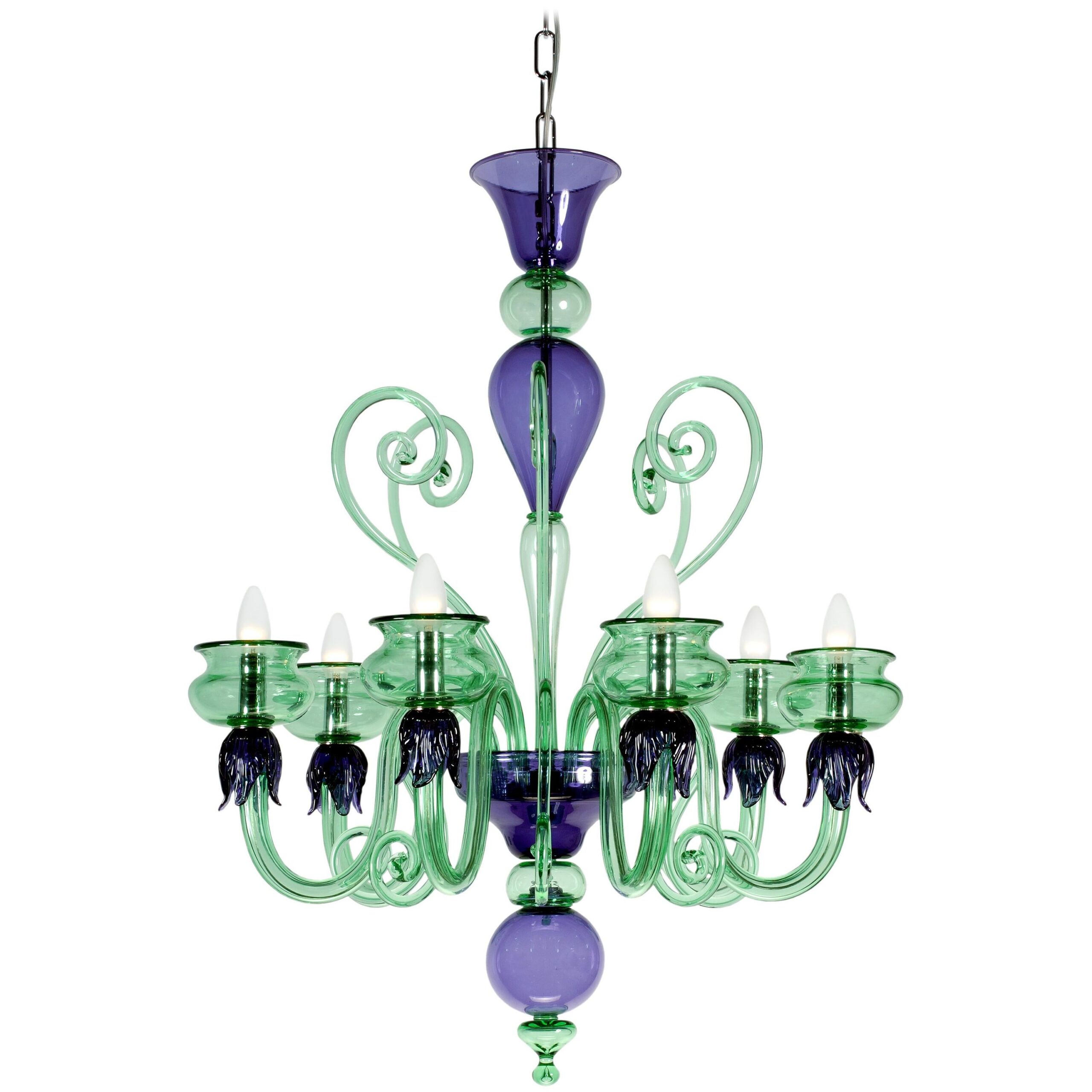

A Legacy That Lasts
Investing in a Murano glass chandelier means owning a piece of living history. These chandeliers aren’t just beautiful—they are heirloom-quality artworks, handmade with passion, patience, and precision. At Styylish, we are proud to offer a curated selection of Murano lighting, from classic Rezzonico designs to bold contemporary statements, each crafted by master glassmakers.
Whether you’re seeking the grandeur of Baroque-inspired lighting or the elegance of minimalist Murano design, there’s a chandelier that will speak to your space—and your sense of style.
Explore our Murano chandelier collection and discover how centuries of Venetian tradition can illuminate your modern interior.


